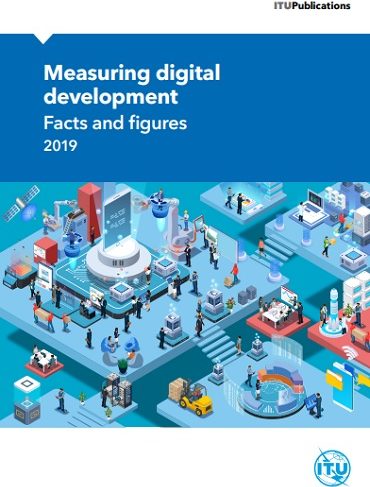
GENEVA — Although Internet usage between men and women is at almost near-parity in the Americas, the digital gender gap is widening globally with women in most countries still trailing men in benefiting from the transformational power of digital technologies. That’s according to a new report from the International Telecommunication Union (ITU).
Some 4.1 billion people are now online, but overall the proportion of all women using the Internet globally is 48%, compared to 58% of all men. More men than women use the Internet in every region of the world except the Americas, where the digital divide is much narrower — in the Americas, 76.8% of women use the Internet, compared to 77.6% of men, according to ITU’s data.
Measuring digital development: Facts and figures 2019 is the first publication in ITU’s new Measuring digital development series of reports. ITU released the highlights of its report in a news release on Tuesday.
ITU’s research shows that while the digital gender divide has been shrinking in the Commonwealth of Independent States (CIS) and Europe, it is growing in Africa, the Arab States and the Asia-Pacific region. The digital gender gap is widest in developing countries, especially Least Developed Countries (LDCs), ITU said.
In terms of mobile communications, almost the entire world population lives within reach of a mobile network, according to the ITU. (Ed. note: The ITU news release says this figure is 96% of the world population, but the report itself states 97% live within reach of a mobile cellular signal.) Furthermore, in the Americas, Europe and the Asia-Pacific region, more than 95% of the population is covered by a 3G or higher mobile broadband network. In the Americas, this breaks down to 90.5% of the population living within reach of an LTE or higher mobile broadband signal and 6.0% having access to a 3G network.
Of the 85 countries that provided gender-based data on mobile phone ownership to the ITU, 61 have a higher proportion of men with mobile phones than women. Of the 24 remaining countries where there is gender parity in mobile phone ownership, or where more women have mobile phones than men, Chile has the highest digital gender gap in favour of women at 12%, ITU said in its news release. (Ed. note: Canada and the United States did not provide gender-based data regarding mobile phone ownership to the ITU for its study.)
ITU’s research confirms a correlation between the mobile phone ownership gender gap and the Internet gender gap — countries where the mobile phone ownership gender divide is large also have a high number of women not using the Internet. “Given that mobile phones are the most-often used means of accessing the Internet, addressing the issue of women’s mobile phone ownership could help reduce the Internet gender divide,” ITU wrote in its news release.
With 4.1 billion people now using the Internet, or 53.6% of the global population, that leaves roughly 3.6 billion people still offline. The majority of the unconnected live in the LDCs where an average of just two out of every 10 people are online, according to ITU.
“Connecting the 3.6 billion people still offline to the power of digital technologies must become one of our most urgent development priorities,” said Doreen Bogdan-Martin, director of ITU’s Telecommunication Development Bureau, in the news release. “Multi-stakeholder collaboration will be key to making universal and meaningful connectivity a reality for all. It will require targeted efforts to lower the cost of broadband and innovative policies to finance network rollout to unconnected populations.”
Internet use in developed countries is nearing saturation levels, with almost 87% of individuals online, according to ITU’s data. Europe is the region with the highest Internet use (82.5%), while Africa is the region with the lowest (28.2%). In the Americas, 77.2% of individuals use the Internet, according to ITU. By the end of 2019, ITU estimates 57% of households globally will have Internet access at home. Currently, in the Americas, 71.8% of households have Internet access at home and 65.7% of households have a computer at home, ITU said. Globally, the number of households with a computer at home is expected to rise by only about one percentage point between 2018 and 2019. “Slowing growth in domestic computer ownership is accounted for by the fact that in many countries computers are no longer needed for home Internet access, with people simply connecting over smart phones,” ITU said.
Examining the barriers to Internet use globally, affordability and lack of digital skills remain some of the key barriers to the uptake and effective use of the Internet, especially in the world’s LDCs, ITU said. In 40 out of 84 countries for which data are available, less than half the population has basic computer skills, such as copying a file or sending an e-mail with an attachment. (Ed. note: Again, Canada and the United States did not provide data for this portion of the study.)
“Even where connectivity exists, we need to be more creative in addressing critical issues like affordability of service, cost of handsets, and lack of digital skills and literacy to enable more people — and especially women — to participate and flourish in the digital economy,” Bogdan-Martin concluded.
To access the ITU report, Measuring digital development: Facts and figures 2019, click here.



